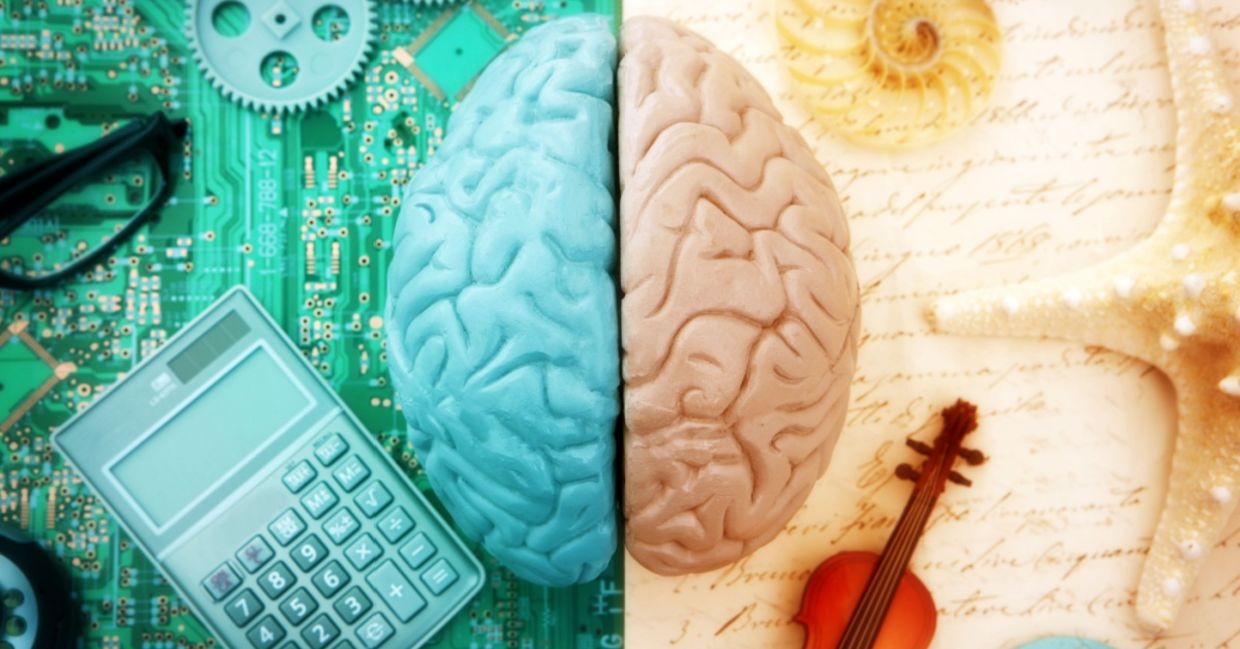
(Hidesy / Shutterstock.com)
Ever wondered if you're more left-brained or right-brained? You’re not alone! For years, people have been asking the same question, imagining that the left side of the brain is all about math and logic, while the right side is where creativity and imagination flow from. But is this really true? Spoiler alert: It’s a little more complicated — and interesting — than that!
View this post on Instagram
The theory: left vs right brained
The notion of people being “right brained” or “left brained” individuals dates back to before the 1980s, verywell mind reports. Nobel Prize winner, Roger W. Sperry, was the first to popularize this theory based on his research relating to patients whose corpus callosum — the “central highway” that connects neurons on the right and left hemispheres of the brain.
Sperry found that patients lacking the corpus callosum had difficulty naming objects processed by the right side of the brain, but no difficulty naming objects processed by the left. Based on this discovery, Sperry theorized that the left side of the brain dealt with language, reasoning, and critical thinking skills, whereas the right side was associated with creativity, intuition, emotion, imagination, and self-expression.
After this discovery it became popular for people to label themselves as right-brained or left-brained. According to Harvard Health,the popular 1979 book, Drawing on the Right Side of the Brain, also helped spread the idea that computer programmers operated in a different brain hemisphere than artists.
What the science says
Modern day research has both corroborated and debunked the theory of brain hemispheres. On the one hand, neuroscientists have uncovered regions of the brain that deal with different tasks. The right hemisphere, for example, is associated with the movement of the left side of the body, whereas the left hemisphere controls the movement of the right side of the body. The front of the brain is linked with creativity and mood, whereas the back deals with sensory and visual information.
But what about language, logic, emotion, or imagination? Researchers tell verywell mind that no link has been found that definitively proves that there is one hemisphere of the brain associated with certain traits and the other hemisphere with other traits.
Science writer Carl Zimmer writes that, “No matter how lateralized the brain can get, though, the two sides still work together. The pop psychology notion of a left brain and a right brain doesn’t capture their intimate working relationship. The left hemisphere specializes in picking out the sounds that form words and working out the syntax of the phrase, for example, but it does not have a monopoly on language processing. The right hemisphere is more sensitive to the emotional features of language, tuning in to the slow rhythms of speech that carry intonation and stress.”
A 2013 University of Utah study that scanned the brains of 1000 participants, some of who defined themselves as left brained and some as right brained. The study found that both hemispheres showed basically equal activity levels for all participants.
Dr. Jeff Anderson, the study’s lead author, wrote, “It’s absolutely true that some brain functions occur in one or the other side of the brain. Language tends to be on the left, attention more on the right. But people don’t tend to have a stronger left- or right-sided brain network. It seems to be determined more by connection.”
Can you still be right brained or left brained?
However, if you’ve gone through life identifying yourself as right brained, don’t let this study put you off,Clinical psychologist Rachel Goldman tells verywell mind. While the neuroscience behind brain hemispheres may not be borne out by research, it is still valuable for individuals to learn about, explore, and define their own strengths and weaknesses.
For example, if one is more creative than verbal, it’s helpful for them to understand this strength and limitation, so they can take steps like starting an art hobby or writing down verbal information to help themselves stay organized.“We can all benefit from improving our brain health, but first we have to identify what may be working for us, or not, and what areas we may want to exercise in order to make them stronger,” Goldman says. “The great news is that we can improve our brain health, build on our strengths, and create new ways of thinking and doing — it just takes identifying it and then practicing it!”
View this post on Instagram
Improving brain health
While there are specific strategies that may help people who have so-called right brain or left brain tendencies to stay organized, positive, and motivated, there are also universal behaviors that can improve one’s brain health no matter what traits they identify with.
These include eating nutrient rich foods, getting enough sleep, exercising, investing in relationships and keeping the mind active. According to Healthline, quitting smoking and maintaining healthy blood sugar and blood pressure levels can also help the brain stay strong and healthy.
In the end, whether one sees themselves as more left-brained or right-brained, it’s important to remember that both sides of the brain are always working together. The left-right brain theory might be fun to think about, but don’t let it limit you! No matter what hemisphere you fall out on, your brain is capable of incredible things.
YOU MIGHT ALSO LIKE:
7 Ways to Use Neurobics to Exercise Your Brain
How to Tap Into Your Brainwaves
Speaking to Babies Can Literally Change Their Brain Structure







